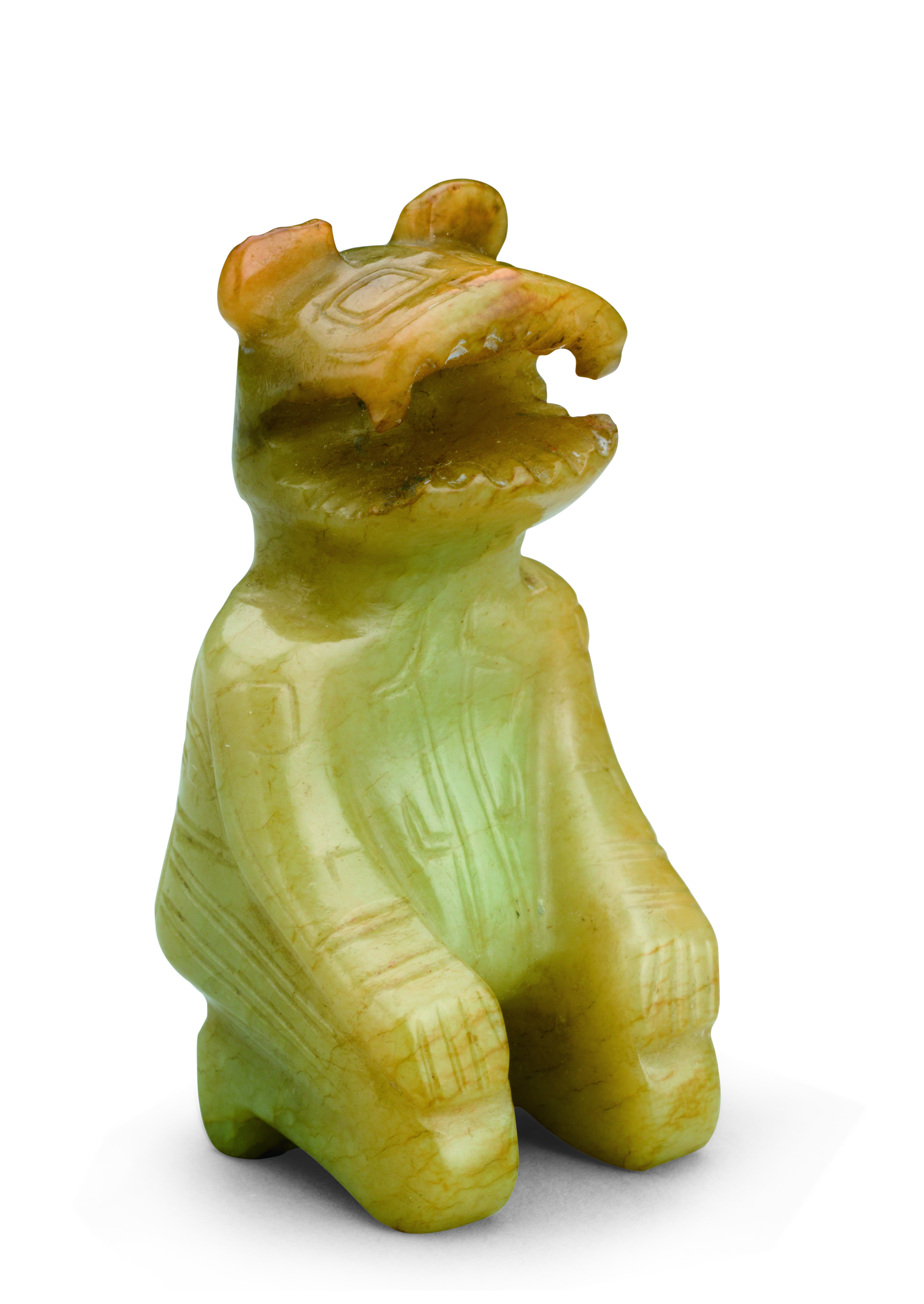Date: Western Zhou Dynasty (1046-771 BC)
Provenance: Unearthed from the Changzikou tomb at the Taiqing Palace site in Luyi county, 1997
Measurements: Height: 5 cm, Width: 2.5 cm, Thickness: 2.8 cm
The figurine is carved out of jade with a translucent texture, yellowish green tone, and brown speckles on the top.
It was carved in a unique form. Looked at from the front side, it resembles a seated tiger-headed human, with its head raising high, mouth open wide, sharp teeth exposed, demonstrating ferociousness. Underneath the tiger head is the seated anthropomorphous body, with hands resting on his knees.
However, viewed from the back, it is a standing owl which shares the same pair of ears as the tiger. The two arms of the human figure are the neatly folded wings of the bird, and his feet are the paws of the owl. The bird raises its beak high, gazing at the front. There is a hole between its paws, which is designed for threading a rope. In this object, a tiger head, human body, and owl were ingeniously integrated together as one, exhibiting the wisdom and craftsmanship of the artisan.
This object fully embodies the brilliant art of jade carving in the early Western Zhou period, thereby it is a precious reference for studying the sitting posture and costume of the Zhou people, and is of great historic and artistic value.
The occupant of the Changzikou tomb was identified as the King of the Chang State of the late Shang (1600-1046 BC) and early Zhou period. Being the largest Shang-Zhou tomb in the Yellow River and Huaihe River valleys, this tomb is also the best preserved, with the richest burial items unearthed among all the mausoleums of the late Shang and early Zhou period.

